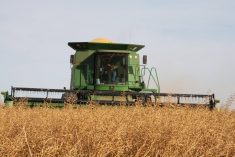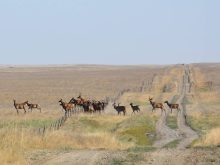Province says review of the North Saskatchewan watershed region will guide decisions on how to best use the land
As government officials begin work on a massive plan to help shape agriculture and development in north-central Alberta, they’re making it clear that changes won’t affect ranchers’ lease agreements.
“The short answer is lease agreements won’t be affected at all,” said Alberta Environment and Parks Minister Shannon Phillips.
“The intent, always, is to underline to leaseholders that their work is important and it’s fundamental to who we are as Albertans. These dispositions (lease agreements) are important to their businesses and their right to make a living, and ranchers or leaseholders are often the best environmental stewards we have.”
Read Also

New program aims to support plant-based exports to Asia
Understanding the preferences of consumers in Taiwan and how they differ from Indonesia or Malaysia isn’t easy for a small company in Saskatchewan.
Producer groups welcomed the news that lease agreements won’t change. In the past, when the province was developing a similar plan for southern Alberta, many ranchers were left confused over what would happen to their leases.
“We don’t want these plans to restrict the abilities of producers to use land and water in the region,” said Rich Smith, executive director with the Alberta Beef Producers.
“We would support the approach the minister is suggesting, where lease agreements won’t be affected. The current management practices producers do on public lands has been good for our industry, good for the province and good for the land.”
This new land-use plan for north-central Alberta will cover the North Saskatchewan watershed region, which includes parts of Banff National Park, the Edmonton area, and the Camrose and Wainwright areas in eastern Alberta.
While it deals with lease agreements, the plan will also guide decisions on how to best use the land for economic, recreational and environmental purposes. As well, it will help identify where wetlands and wildlife conservation can be improved and how to best preserve agriculture.
Many are hoping the province sets clear priorities in the plan, so certain parts of the region can be dealt with first.
“With the plan in southern Alberta, there was a lack of specificity,” said Norine Ambrose, executive director of Cows and Fish, an organization that works with landowners to support wetland and riparian management.
“We can’t do everything everywhere all the time, so they should decide what’s important and acknowledge the key role water storage plays. They’ll have to make hard decisions, which can be extremely tough to do.”
So far, it appears the North Saskatchewan watershed plan will likely be more specific than the southern one. A set of recommendations has already been developed for it. Many of them discuss the importance leaseholders play in conservation, and certain areas of the region have been prioritized for improvement.
For instance, it’s recommended the Alberta government launch pilot projects in three districts so more ranchers can become familiar with programs that deal with conservation offsets and easements.
“While we don’t want overly restrictive conservation tools, we need to keep our minds open to the kinds of tools available,” Smith said. “One of those tools to consider carefully is the use of some form of ecosystem service payment or recognition that would encourage the retention of grasslands. There’s a lot of value in keeping grasslands and currently we don’t have a payment program that deals with that.”
Phillips said there are opportunities available for such a program and she’s open to working with crop and beef groups to make it more accessible.
“As the carbon price increases, there’s more opportunity there and farmers will find more of a reason to do it,” she said. “But is there more to be done? For sure, absolutely. I’ve put that out to agriculture producers in various ways, so they can bring me ways to strengthen the system and make it work for farmers.
“In particular for grazing lease holders, I think what’s really important is certainty. It’s important for the bank and planning for the future.”
The recommendations for the North Saskatchewan plan are currently out for feedback. People can provide their input by visiting www.landuse.alberta.ca.
A draft plan for the region is expected to be completed once the consultation period is done.

















